1. Waterbeds
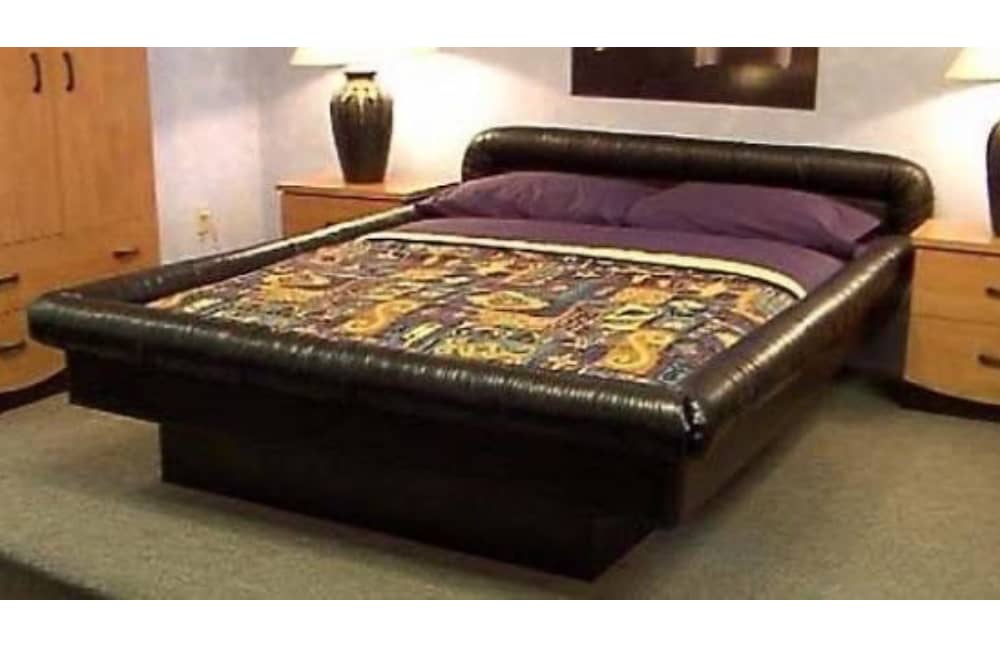
Heavy, prone to leaking, and notoriously difficult to move, the waterbed was nonetheless considered the absolute height of cool and counter-culture luxury in the 1970s. Invented in the late ’60s by a design student named Charles Prior Hall, it entered the mainstream as a symbol of sexual freedom and relaxation. Early versions were essentially large vinyl bladders filled with hundreds of gallons of water, giving the sensation of floating and cradling the body. While many loved the therapeutic warmth and unique feel, the impracticalities ultimately outweighed the benefits. The risk of punctures and floods, the sheer weight (a queen-size could weigh over 1,500 pounds, straining apartment floors), and the effort required to fill and heat them eventually led to their abandonment. By the ’80s, they had largely sloshed out of bedrooms across America, replaced by more practical spring and foam mattresses.
2. Pet Rocks
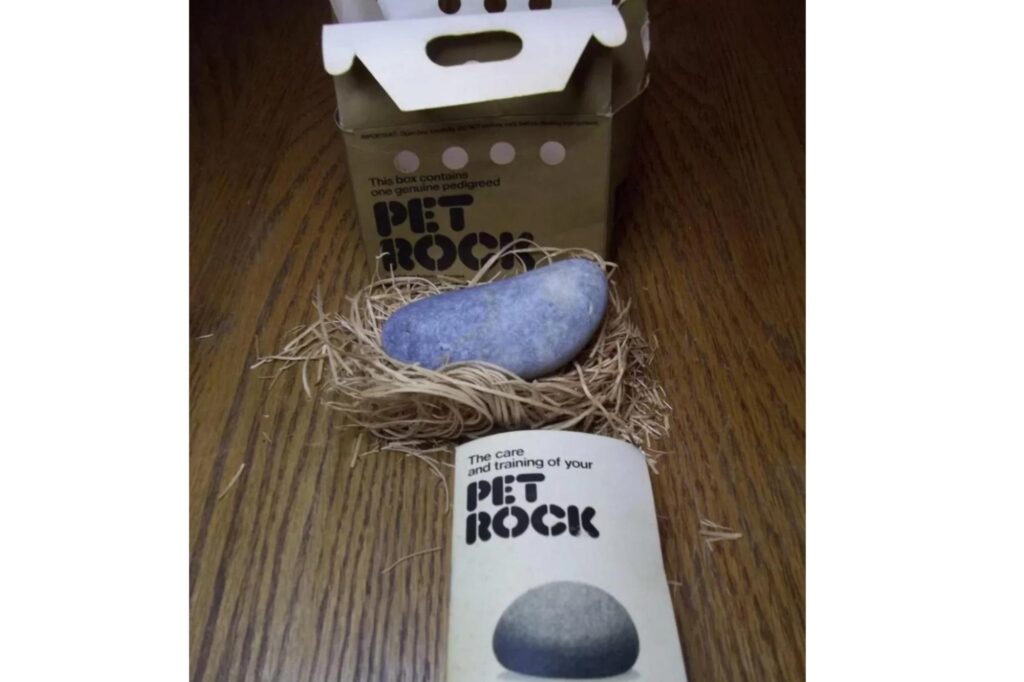
In 1975, a true marketing genius named Gary Dahl sold ordinary, smooth stones as “low-maintenance pets” in a small cardboard box, complete with a straw bed and a tongue-in-cheek instruction manual. He created the concept while joking with friends about how annoying their real pets were. The manual offered humorous advice on care and training, suggesting the pet rock would “play dead” if you put it down and that it didn’t need to be taken outside. Millions of these gag gifts were sold during the Christmas season of 1975, with Dahl allegedly becoming a millionaire in less than six months. The fad, however, burned out as quickly as it started, fizzling by early 1976 as the novelty wore off. It remains the ultimate symbol of ’70s silliness and a masterclass in novelty marketing, illustrating a peculiar moment in time when Americans embraced a simple, absurd joke on a massive scale.
3. Mood Rings
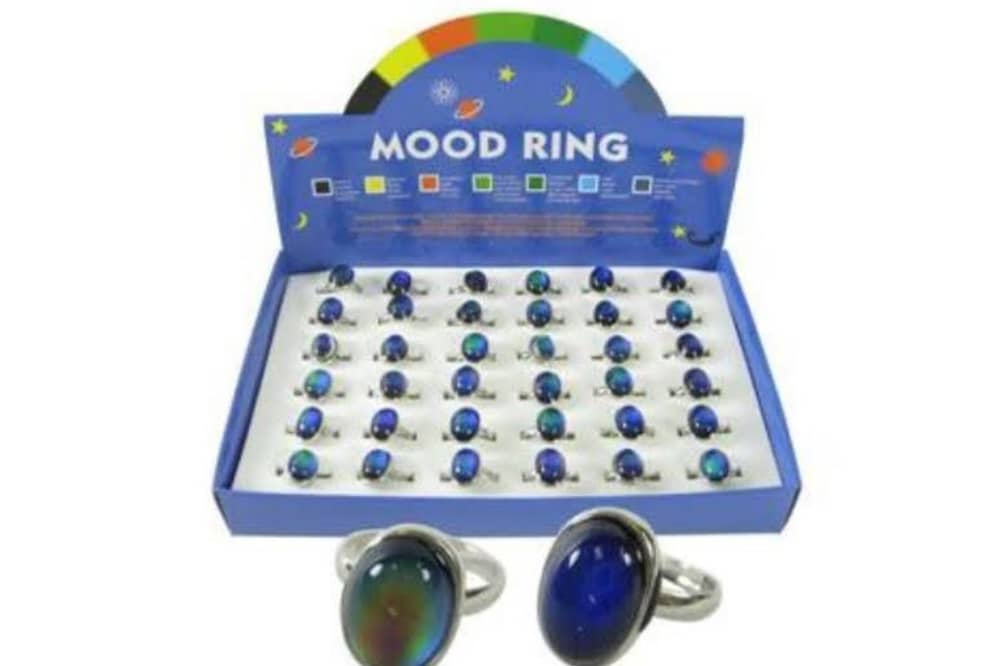
These novelty rings promised to reveal the wearer’s inner emotions through a color-changing stone, captivating teenagers with the idea of unlocking their feelings. In reality, the “stone” was a thermochromic liquid crystal sealed beneath a protective layer. It changed color based on the wearer’s surface body temperature, which often fluctuated with mood or excitement. A dark color, for instance, indicated a cool temperature (perhaps from a relaxed or calm state), while a warmer color, like blue or green, suggested a higher temperature (like one might have if they were nervous or excited). The scientific explanation didn’t matter to the young people staring obsessively at the rings, convinced they could read an emotional truth in the shifting colors. By the ’80s, the cheap novelty of the design and the inaccuracy of the “readings” saw them vanish from the mainstream, though their legacy of self-exploration through pseudoscience is unmistakable.
4. Disco Balls in Roller Rinks
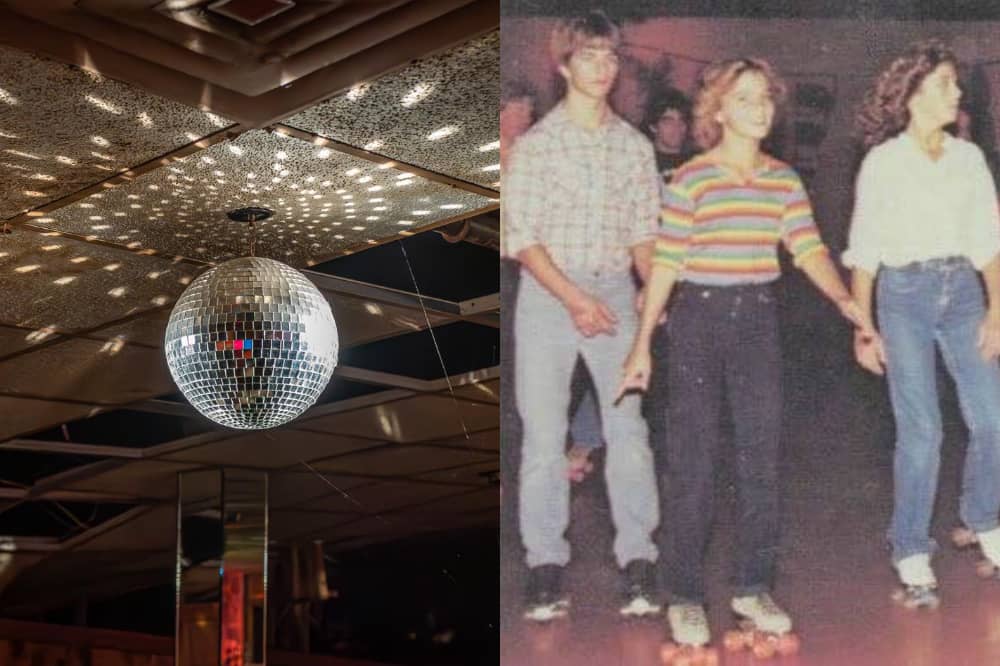
The spinning, mirrored disco ball became the defining visual emblem of the disco craze that dominated the mid-to-late ’70s. While they hung in nightclubs, their presence in roller rinks amplified the energetic and carefree spirit of the decade. As skaters circled the floor, colored spotlights from the ceiling would bounce off the hundreds of tiny, square mirrors cemented onto the ball’s surface, scattering dazzling, moving pinpricks of light across the rink’s walls and floor. This lighting effect transformed a simple skate session into a hypnotic, vibrant, and cinematic experience. The effect perfectly synchronized with the pulsing beat of Donna Summer or the Bee Gees. The disco ball, which actually predates the ’70s, became so strongly associated with the fleeting disco trend that it quickly became a piece of kitsch by the ’80s, but for a solid five years, it symbolized a world of pure, glittering escape.
5. Streaking
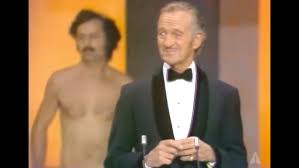
For a short-lived but memorable period in the mid-1970s, streaking, the act of running naked through a public space, became a massive, nationwide phenomenon. It was embraced as a prank, a form of rebellion, and a simple desire for attention. The craze reportedly peaked around 1974, sweeping through college campuses, major sporting events (like the Super Bowl and college football games), and even high-profile events like the Academy Awards, where a man famously ran across the stage behind host David Niven. Streaking was seen as a relatively harmless, quirky, and slightly subversive way for people, predominantly students, to vent or simply gain a moment of shocking notoriety. Police and authorities treated it with a mixture of amusement and annoyance. The trend rapidly faded as the initial shock value wore off, but it’s universally remembered as one of the decade’s most bizarre and publicly visible moments of collective social silliness.
5. Shrinky Dinks
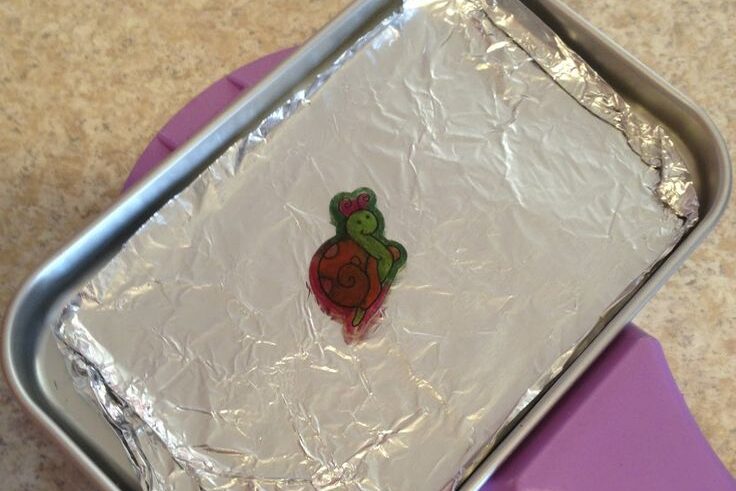
This wildly popular children’s craft kit involved drawing or tracing a design onto a special sheet of thin, flexible plastic. Once the drawing was complete, the sheet was cut out and placed in a household oven. As the plastic heated, it would shrink to about one-ninth of its original size while simultaneously thickening into a hard, durable charm, toy, or keychain. Shrinky Dinks, invented in 1973 by two homemakers, were simple, magical, and entirely mesmerizing to watch through the oven window, tapping into a child’s natural curiosity about science and transformation. The resulting creations were often attached to bracelets or necklaces, making them a personal and collectible form of art. They were a massive fad throughout the mid-to-late ’70s but gradually faded as children moved on to more complex toys and video games, though the simple joy of watching a drawing magically compact itself remains a nostalgic touchpoint for the generation.
6. Wacky Packages Stickers
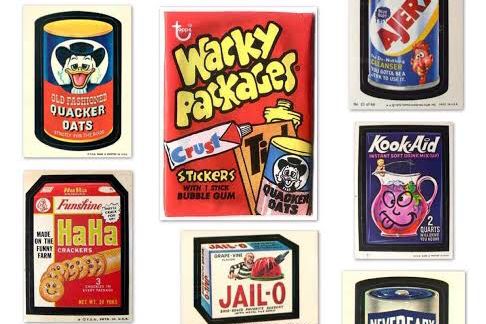
A direct descendant of the Wacky Packages trading cards from the late ’60s, these collectible stickers became a massive schoolyard fad in the 1970s. Produced by Topps, the same company behind baseball cards, these stickers were elaborate, satirical parodies of famous, everyday consumer brands. For example, the popular “Crust” toothpaste became “Crust” (with a gruesome image), “Tide” laundry detergent became “Tired,” and “Pillsbury Doughboy” became “Pills-Bury Dough.” The humor was often silly, slightly gross, and rebellious, perfectly tailored for kids who enjoyed a laugh at the expense of authority and advertising. Children enthusiastically collected them and stuck them on school binders, lockers, and bedroom furniture. They were so wildly popular that they sparked lawsuits from some of the parodied companies. As the decade ended, the fad died down, and the stickers eventually disappeared from store shelves, leaving behind a legacy of irreverent, pre-digital-age meme humor.
7. Sea Monkeys
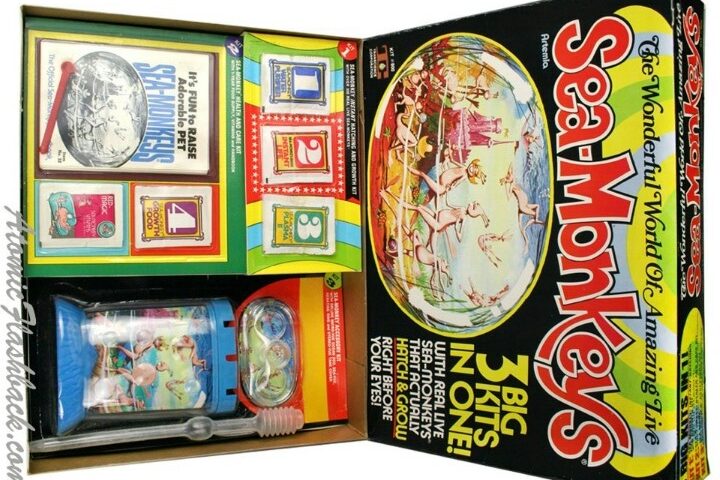
Advertisements promising “instant pets” that were “live, just add water!” were staples in the backs of comic books and children’s magazines throughout the 1970s. The packaging showed a stylized, humanoid creature with a crown, leading many children to expect magical, intelligent, tiny friends. What arrived was a packet of freeze-dried brine shrimp eggs, which, when added to treated water, “hatched” into tiny, translucent crustaceans. The actual creatures were a far cry from the illustrations, often leading to disappointment. Despite this, millions of children still ordered them, making the Sea Monkey an enduring, strange cultural phenomenon. The product’s creator, Harold von Braunhut, brilliantly marketed the novelty, selling the dream of an otherworldly pet that required minimal effort. The fad eventually waned as kids grew up and realized they owned microscopic crustaceans, but the kits continue to be sold today, a testament to the power of a bizarre, fantastical sales pitch.
8. Platform Shoes
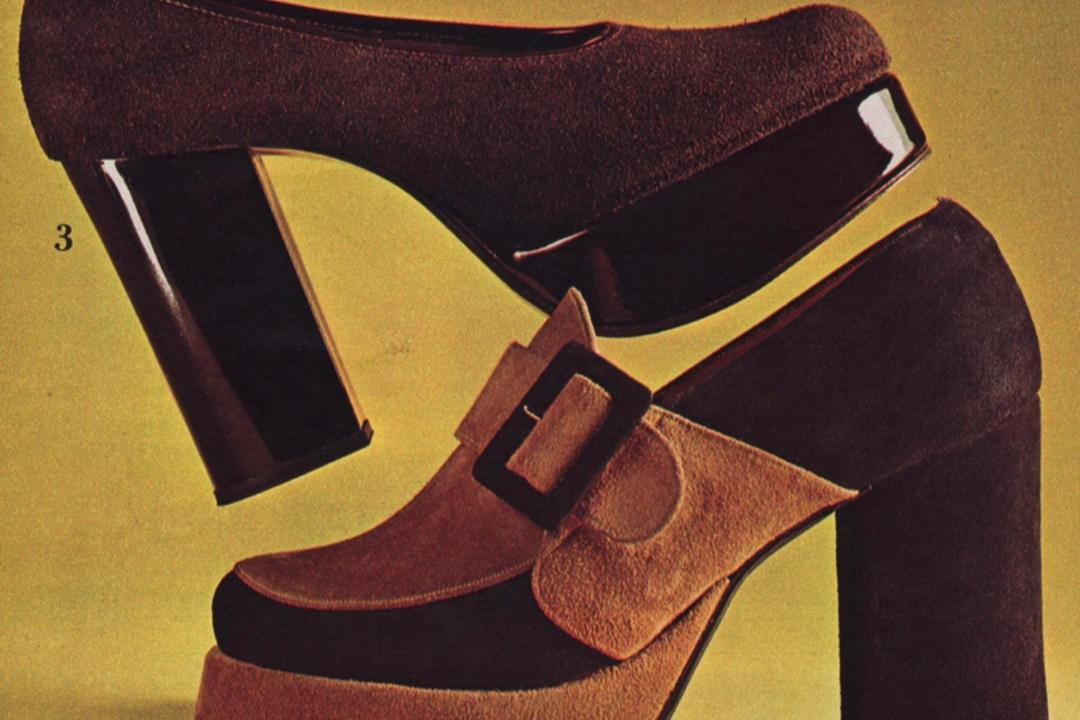
Towering, often brightly colored, and architecturally daring, platform shoes defined ’70s footwear for both men and women. These shoes featured thick soles, sometimes two to four inches high, often paired with an equally high block heel. They were embraced by the disco culture, where the added height helped dancers stand out and made their flamboyant flares and bell-bottoms look even more dramatic. While undeniably stylish and an essential part of the decade’s fashion, they were also impractical and often dangerous, leading to many a twisted ankle. Designers like Candie’s and Kenneth Cole popularized them. By the early 1980s, as the disco era faded, so did the platforms, which were replaced by flatter, more athletic footwear. Though they stage occasional retro comebacks on runways, the high-stacked platform of the ’70s remains tied to that specific period of loud, confident, and somewhat risky fashion.
9. Polyester Leisure Suits
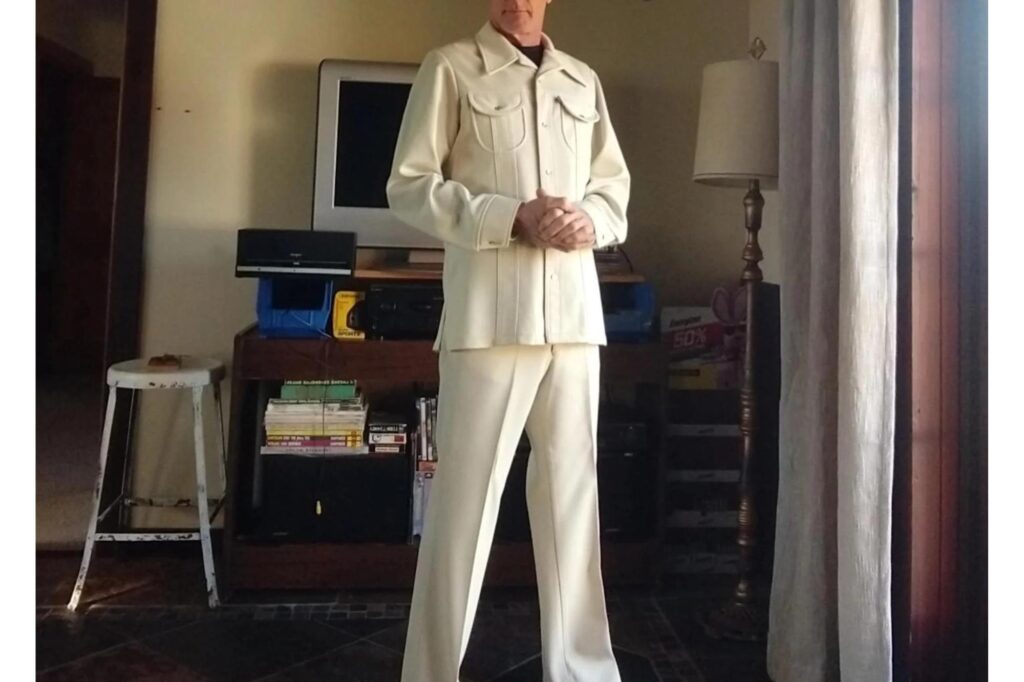
The polyester leisure suit became a controversial wardrobe staple for men in the 1970s, symbolizing a cultural shift towards casual comfort, even in semi-formal settings. Typically made from synthetic, shiny polyester, these suits featured a jacket with a broad collar and patch pockets, often paired with matching bell-bottom trousers. They were manufactured in a dizzying array of colors, from pastels to loud reds, greens, and browns. Their appeal lay in their comfort, low cost, and wrinkle resistance, making them easy to maintain. However, the non-breathable polyester fabric and the often-gaudy colors eventually led to their infamy as a symbol of ’70s bad taste. By the close of the decade, the rise of more structured, traditional fashion and the widespread association of the suit with kitsch saw them unceremoniously laughed out of closets across America, marking a spectacular, if brief, sartorial misstep.
10. Big Wheels
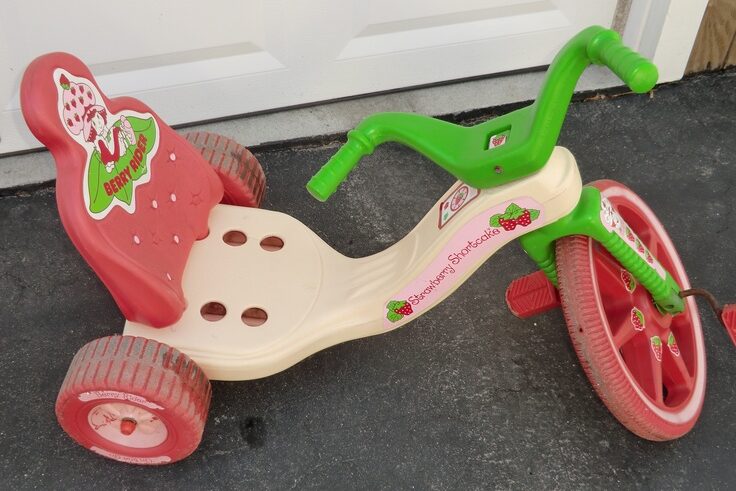
More than just a toy, the Big Wheel was a symbol of childhood independence for millions of kids in the 1970s. Introduced in 1969, this three-wheeled, low-slung tricycle was characterized by an oversized, bright red front wheel and two smaller, plastic rear wheels. Its large plastic construction made it affordable, nearly indestructible, and safe for high-speed downhill rides and power-slide turns, which kids loved. The design, which positioned the rider low to the ground, offered a sense of reckless speed with minimal actual danger. They roared down sidewalks and driveways across America. Their popularity remained immense throughout the ’70s and early ’80s, defining the era of neighborhood play. However, as the decade transitioned, older children began to crave the complexity and ruggedness of BMX bikes, which offered a more authentic, two-wheeled riding experience, eventually sidelining the beloved plastic trike.
11. Skateboards with Metal Wheels
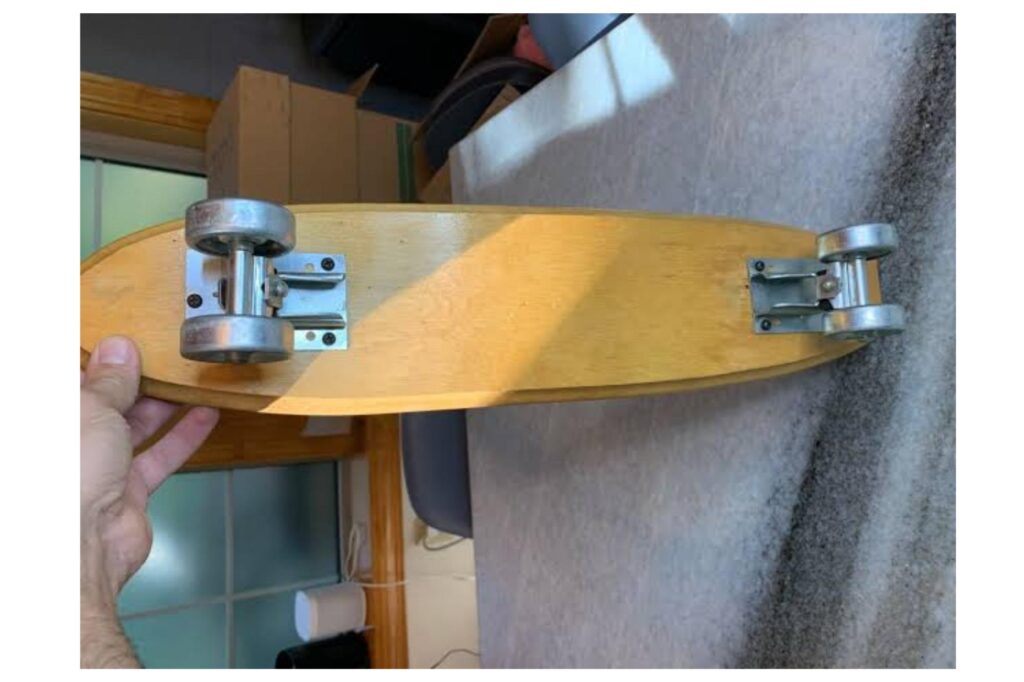
Before the invention of the polyurethane wheel, early 1970s skateboards, or “sidewalk surfers,” as they were often called, came equipped with hard, clay or, more dangerously, metal wheels. These boards provided a wildly different, far riskier experience than modern versions. The unforgiving metal wheels rattled violently over the slightest crack, offered almost no grip, and had no shock absorption, making for a bone-jarring and loud ride. They thrilled early adopters looking for a rush of adventure and speed, but they were notoriously difficult to control, especially at high speed or when turning. The game-changing moment came in 1972 when Frank Nasworthy developed urethane wheels, which were quieter, smoother, and offered excellent traction. This innovation immediately made the old metal-wheeled boards obsolete and unsafe, leading to their rapid disappearance and fundamentally transforming skateboarding into the sport we recognize today.
12. Tang Drink Mix
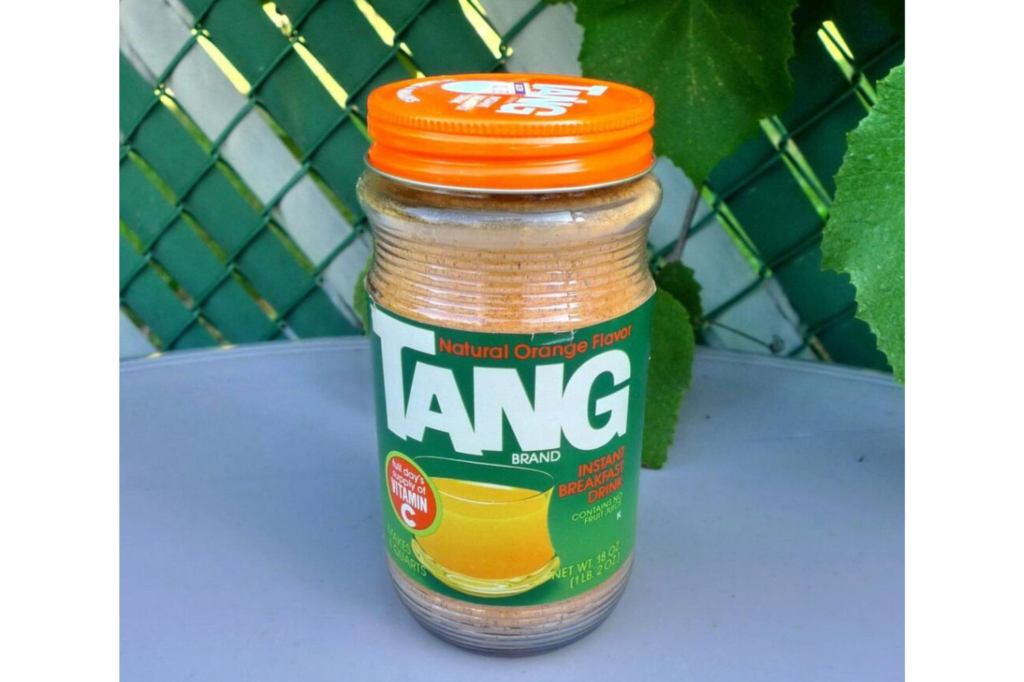
Marketed heavily throughout the ’70s, particularly on the back of its famous association with the space program, Tang was sold as the drink of astronauts. Originally developed by General Foods in 1957, its popularity exploded in the decade due to the successful marketing linking it to the exciting world of NASA missions. The orange-flavored, powdered drink mix was a household staple, found in almost every pantry. It was often served in a large plastic pitcher, representing a cheap, quick, and easy way to offer a colorful, sweet beverage to families and children. However, the chalky texture and highly artificial flavor, combined with the increasing public awareness of high sugar content in powdered drinks, began to work against it. As the ’80s introduced juice boxes, bottled water, and a broader push for healthier beverages, Tang’s appeal faded, and it lost its status as a kitchen essential, though it remains an iconic taste of the era.
13. Clackers
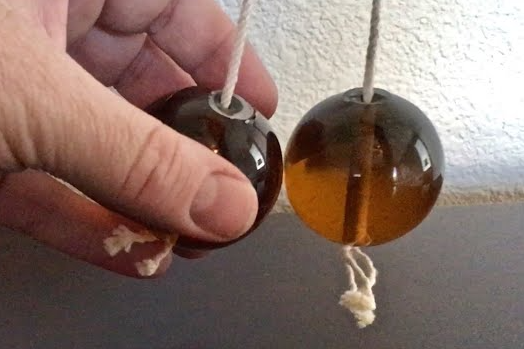
Clackers (also known as Clackers or Click-Clacks) were a notoriously short-lived, loud, and potentially hazardous toy fad of the early 1970s. The toy consisted of two hard acrylic or plastic balls, about the size of golf balls, strung together by a cord and held by a finger loop. The object was to swing the balls in opposite directions, creating a rhythmic, continuous, and extremely loud “clack-clack-clack” as they collided, with the ultimate goal of getting them to meet perfectly above and below the hand. However, the balls, often made from cheap, brittle acrylic, were prone to shattering under the high forces of impact, occasionally injuring children’s eyes or hands with flying shards. By the early 1970s, numerous reports of injuries prompted product recalls and bans in many jurisdictions. This safety crisis led to the rapid removal of Clackers from the market, cementing their place as one of the most famous and short-lived dangerous toy fads of the decade.
14. Star Wars Early Bird Kit
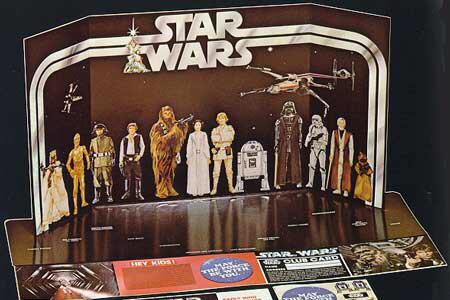
When Star Wars: A New Hope became an unexpected cultural phenomenon in May 1977, the movie’s toy manufacturer, Kenner, was caught completely off guard. They had severely underestimated demand and had not yet manufactured a single action figure in time for the crucial Christmas shopping season. In a stroke of brilliant but bizarre marketing, Kenner sold an “Early Bird Certificate Package”, essentially an empty cardboard box. Inside was a display stand, a sticker, and a certificate that promised the buyer they would be among the first to receive the first four action figures (Luke Skywalker, Princess Leia, R2-D2, and Chewbacca) when they eventually shipped months later. Fans eagerly bought the promise, with over 300,000 units sold. This empty box became a symbol of the movie’s runaway success and the intense consumer demand it created. Once the actual figures shipped in 1978, the unique, anticipatory kit disappeared, though the vintage empty box is now a sought-after collectible.
15. Smiley Face “Have a Nice Day” Merch
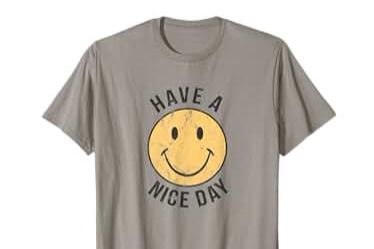
The bright yellow smiley face became an unofficial, ubiquitous symbol of the early 1970s, embodying a simple, almost aggressively cheerful optimism. Originally created in 1963 by Harvey Ball, it exploded in popularity in the ’70s, largely due to two brothers, Bernard and Murray Spain, who copyrighted the accompanying phrase “Have a Nice Day” and plastered the image onto countless merchandise items. The face, with its two oval eyes and simple upturned mouth, adorned everything from buttons and mugs to t-shirts, posters, and bumper stickers. It was a simple, feel-good message that perfectly captured the desire for peace and positivity following the tumultuous late ’60s. However, the sheer overexposure and cheap proliferation of the merchandise eventually led to the symbol becoming trite and cliché. By the 1980s, the fad had largely fizzled out, though the iconic graphic’s simple design and sentiment are clearly the ancestral blueprint for the modern emoji.
16. K-tel Compilation Albums
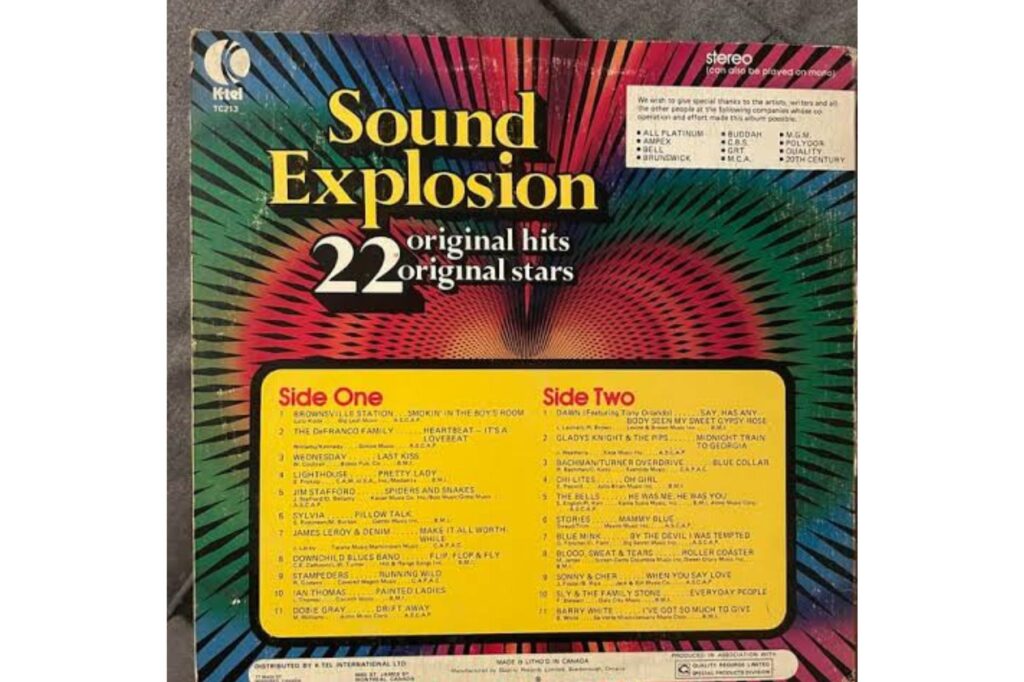
In an age before streaming and digital playlists, K-tel compilation albums offered a revolutionary way to own a collection of hit songs for a low price. K-tel was a master of the TV infomercial in the 1970s, selling vinyl records with dramatic voiceovers promising “20 Original Hits! 20 Original Stars!” The albums, with titles like ’70s Disco Fever or Blockbuster Hits, would feature truncated versions of popular songs licensed from various labels. These albums were an essential way for families to quickly fill their shelves with diverse music, introducing a generation to music discovery beyond buying a single album by one artist. They dominated mail-order sales and retail endcaps. The company eventually branched into 8-tracks and cassettes. As major record labels started releasing their own compilations and, eventually, as digital music and streaming took over, the K-tel model became obsolete, a charming footnote in the history of music consumption.
17. Earth Shoes
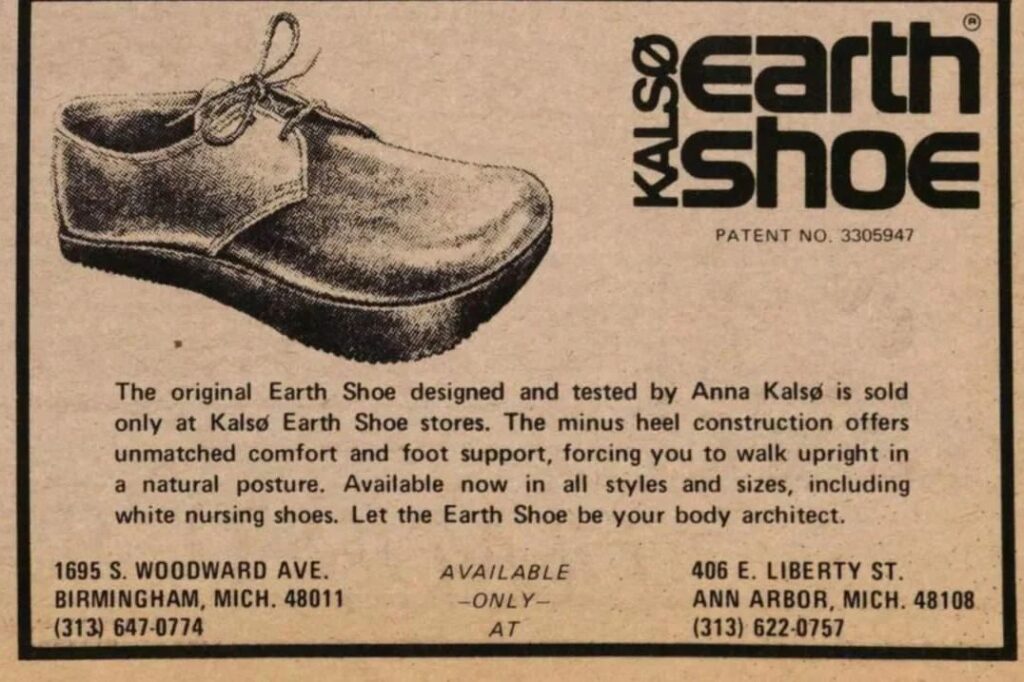
The ’70s embraced a brief but fervent health-and-wellness movement, and one of its most peculiar fashion trends was the Earth Shoe. Invented by Danish yoga instructor Anne Kalsø, the shoe’s defining characteristic was its “negative heel,” where the heel was lower than the toe box. The design was intended to mimic the posture and feel of walking barefoot on sand, which Kalsø claimed promoted better posture, strengthened calf muscles, and improved overall health. Earth Shoes quickly gained a cult following among the decade’s counter-culture and health-conscious consumers. The unique, often clunky, box-toed design became a polarizing fashion statement. Despite the health promises, many users found them uncomfortable, and critics were skeptical of the claimed benefits. The fad peaked around the mid-’70s, but the company struggled with manufacturing and copyright issues, leading to their eventual disappearance by the early 1980s, leaving behind only the memory of their odd, health-focused design.
18. Banana-Seat Bicycles
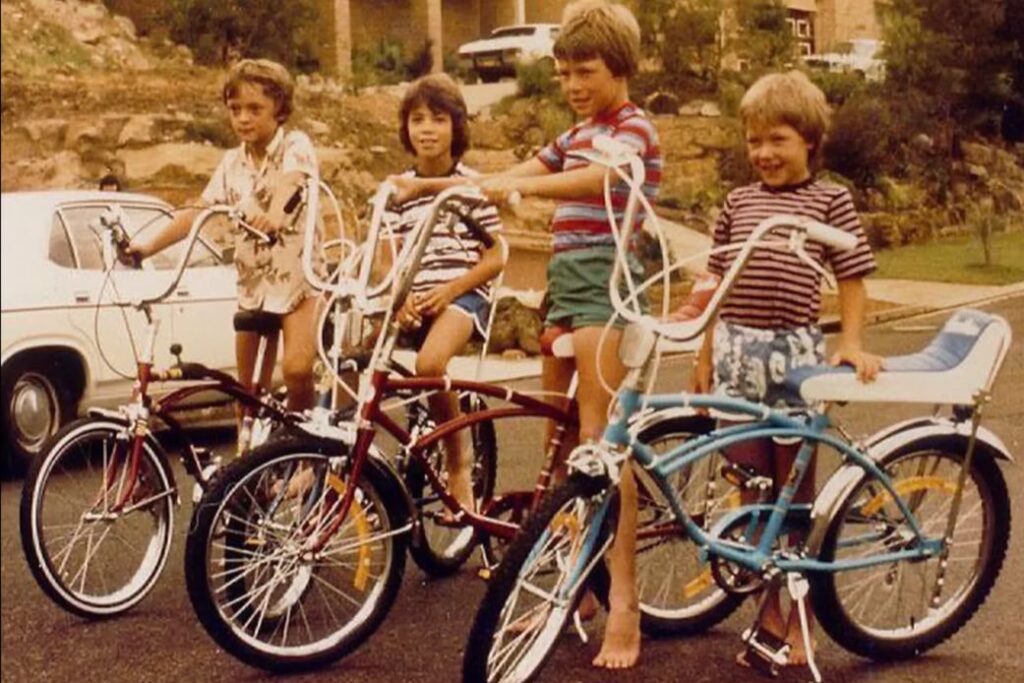
For the children of the 1970s, the banana-seat bicycle was the epitome of cool and freedom. These bikes were characterized by a long, saddle-style seat, often covered in colorful vinyl, that resembled a banana, and high, chopper-style handlebars (ape-hangers) or racing-style grips. They were visually inspired by choppers and muscle cars, giving kids a daring, stylish ride that was perfect for stunts and cruising with friends. Many models, such as the famous Schwinn Sting-Ray, also included a gear shifter mounted on the frame and often came equipped with colorful streamers on the handlebars. These bikes ruled the sidewalks throughout the decade, serving as the essential tool for neighborhood adventures. However, as the 1980s approached, the emphasis shifted to ruggedness and performance. The rise of BMX (Bicycle Motocross) bikes and their trick-friendly, durable frames swiftly replaced the stylish banana-seat cruisers as the vehicle of choice for the next generation of riders.
19. Roller Disco Nights
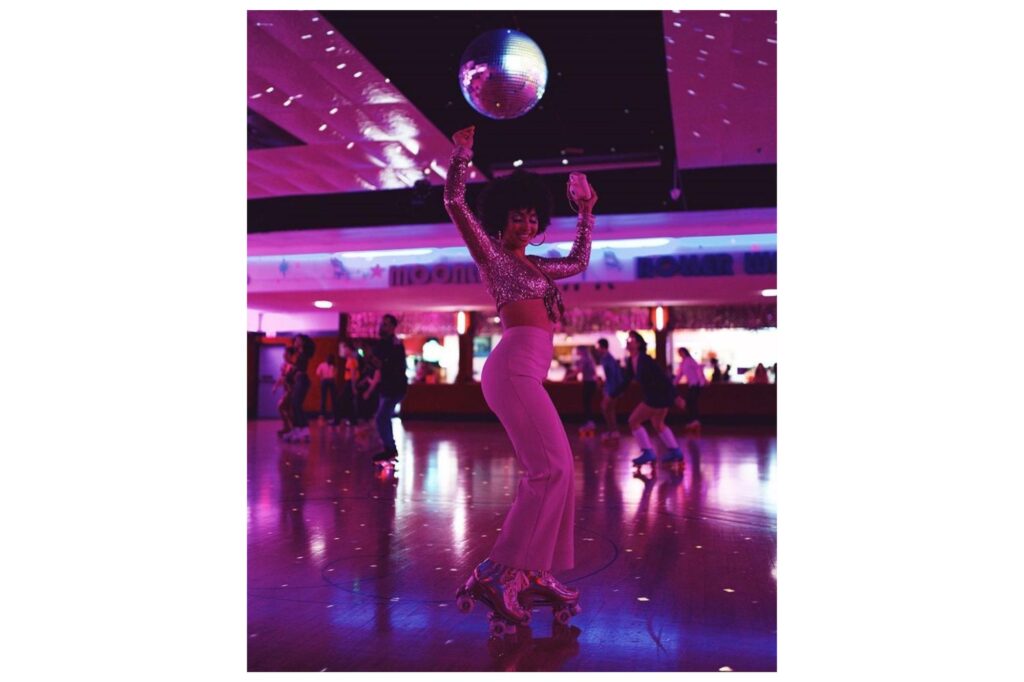
The disco craze wasn’t confined to nightclubs; it literally rolled into roller rinks, giving birth to the short-lived but vibrant trend of roller disco. This fad saw the traditional pastime of roller skating explode with the energy, fashion, and soundtrack of the disco era. Rinks were transformed with pulsating, colored neon lights, heavy fog machines, and, of course, the glittering disco ball. Attendees dressed in flamboyant ’70s attire, flares, satin, and bright colors, and spent hours showing off their spins, synchronized moves, and couples’ glides to the beat of KC and the Sunshine Band or Gloria Gaynor. It was a perfect blend of exercise, fashion, and social scene, epitomized by movies like Roller Boogie and Xanadu. The trend declined sharply by the mid-1980s, largely fading away with the broader decline of the disco movement, but the image of the roller disco remains one of the most pure, high-energy visuals of 1970s recreational culture.
20. Digital Watches with Red LED Displays
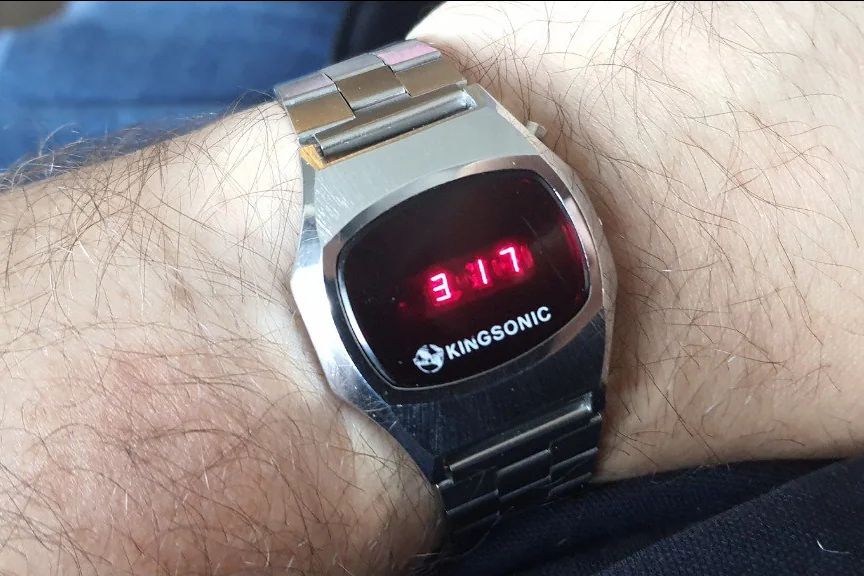
When they first hit the market, the digital watch with a red LED (Light-Emitting Diode) display felt like a piece of pure science fiction. These watches, unlike their analog predecessors, displayed the time with glowing red, blocky numerals. Brands like Hamilton Pulsar championed this technology, making them an expensive, cutting-edge status symbol in the early 1970s. However, the technology had a fatal flaw: to conserve the massive amount of battery power the LED required, the display remained dark until the wearer pressed a physical button on the side. This required an active press just to check the time, a major inconvenience compared to a glance at an analog face. Furthermore, the red display was notoriously hard to read in bright sunlight. By the late ’70s and early ’80s, the development of far more efficient and always-on LCD (Liquid-Crystal Display) technology rendered the red LED models instantly obsolete, marking a short-lived but necessary evolutionary step in personal electronics.
21. TV Dinners in Foil Trays
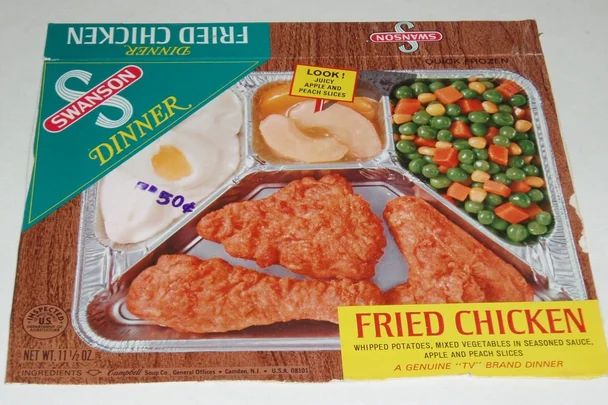
The TV dinner was a staple of 1970s convenience, representing the decade’s embrace of easy, ready-made meals. Before the widespread adoption of the microwave oven, these frozen meals, often featuring Salisbury steak, mashed potatoes, and a small, cubed dessert, were designed to be cooked and eaten directly from a compartmented aluminum foil tray. Families would slide the entire meal into a conventional oven for 20 to 30 minutes. The foil tray was essential for both cooking and serving, and the convenience often outweighed the quality of the meal. The entire concept was sold around the idea of a family eating a meal while watching television together, reinforcing a new, casual style of American home life. As microwave ovens became standard kitchen appliances in the 1980s, the metal foil trays had to be completely phased out due to their incompatibility with microwave heating, replaced instead by the plastic and paperboard trays we see today.
22. McDonaldland Characters
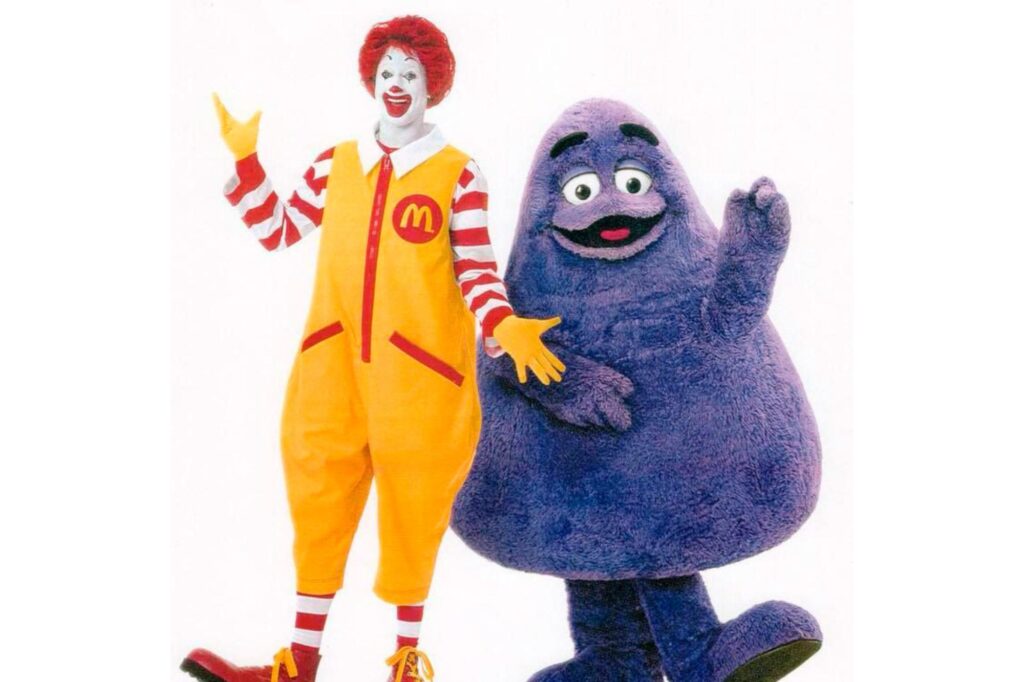
Throughout the 1970s, McDonald’s used a colorful cast of eccentric characters to market its brand to children. Beyond Ronald McDonald, the fantastical residents of McDonaldland, including the purple, blob-like Grimace; the shifty, burger-stealing Hamburglar; and the large-headed civic leader Mayor McCheese, were staples in commercials and playground equipment. These characters gave the brand a playful, fantasy-filled universe that defined childhood marketing for a generation. The characters were designed to be memorable and fun, giving kids a reason to beg their parents for a trip to the golden arches. However, as the 1980s dawned, cultural tastes changed, and the company began a corporate rebranding to project a more modern and streamlined image. The more surreal and fantastical characters were gradually phased out of commercials and in-store design, leaving behind a simpler focus on Ronald and the core product, relegating Mayor McCheese and his friends to a nostalgic memory.
23. Pong Arcade Machines
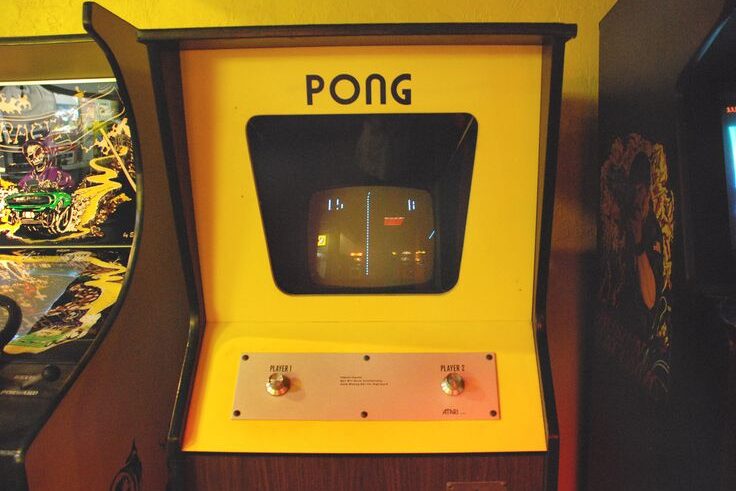
The Pong arcade machine was arguably the first video game to achieve widespread commercial success, effectively launching the entire video game industry. Released by Atari in 1972, the game was laughably simple by modern standards: a two-dimensional tennis or ping-pong simulation where two paddles (controlled by rotating knobs) volleyed a small square ball back and forth. The monochromatic screen and basic sound effects belied its revolutionary impact. In the early 1970s, Pong cabinets were a captivating fixture in bars, bowling alleys, and arcades, completely mesmerizing players with its simple, competitive fun. It proved that electronic games could be a viable and popular form of entertainment. Its success led directly to the creation of the first home video game consoles, like the Magnavox Odyssey and the home version of Pong itself. Once the more advanced Atari 2600 and other complex home consoles were released in the late ’70s, the simple arcade cabinet quickly became obsolete, but its role as a groundbreaking technological first remains undisputed.
The 1970s were filled with oddball inventions and playful trends, from Pet Rocks to polyester suits. Some were hilarious, others ridiculous, but together they captured the spirit of a decade willing to try anything once. We may have moved on to sleeker tech and less flammable fabrics, but the memory of these short-lived fads proves that the ’70s truly embraced life in full, glorious color.
This story 23 Products and Fads from the ’70s That Completely Disappeared was first published on Daily FETCH


